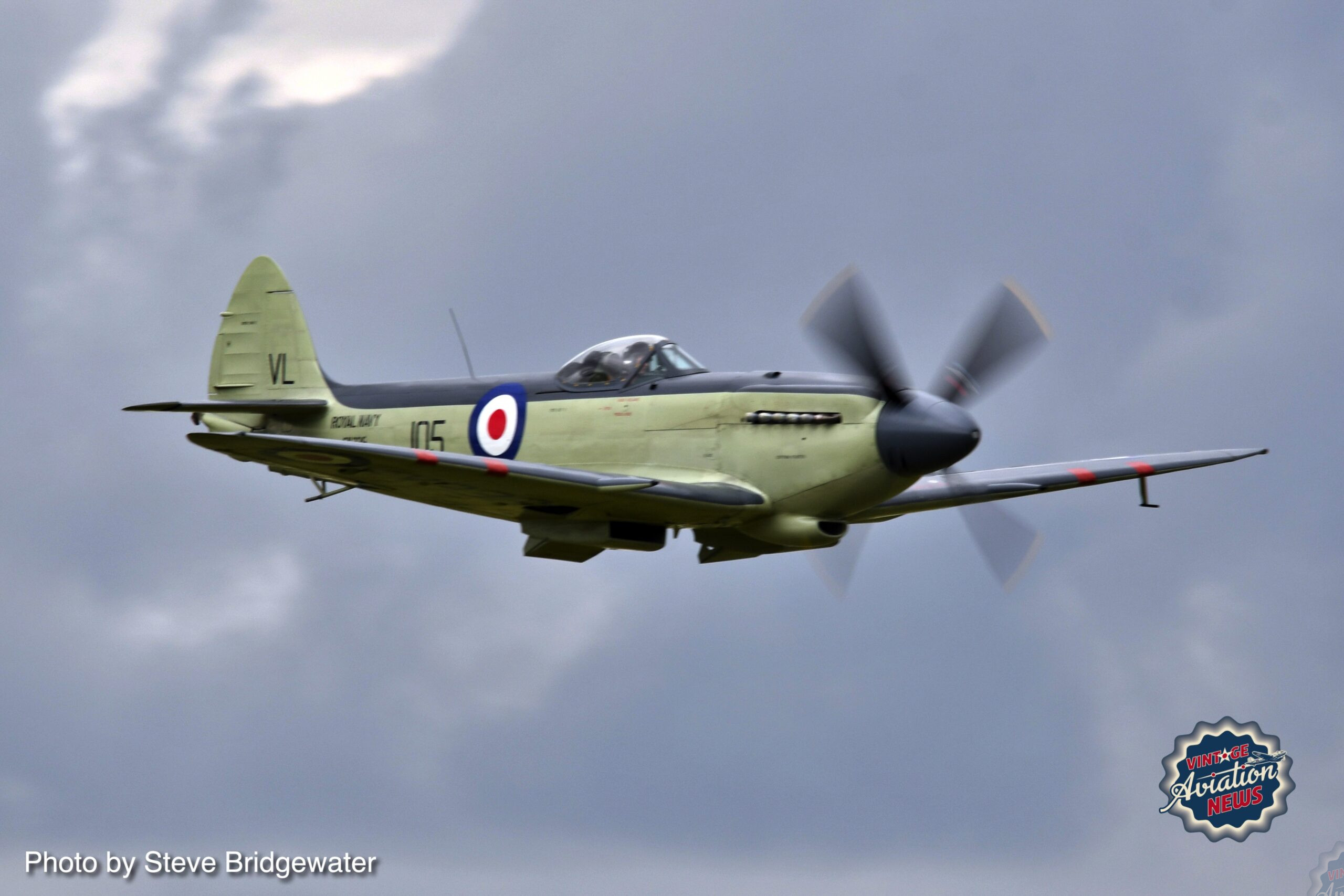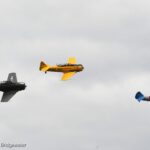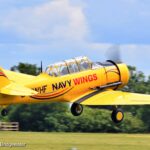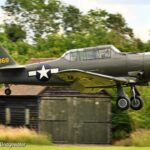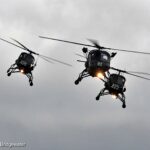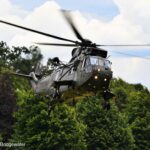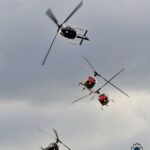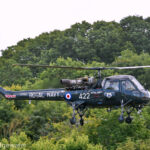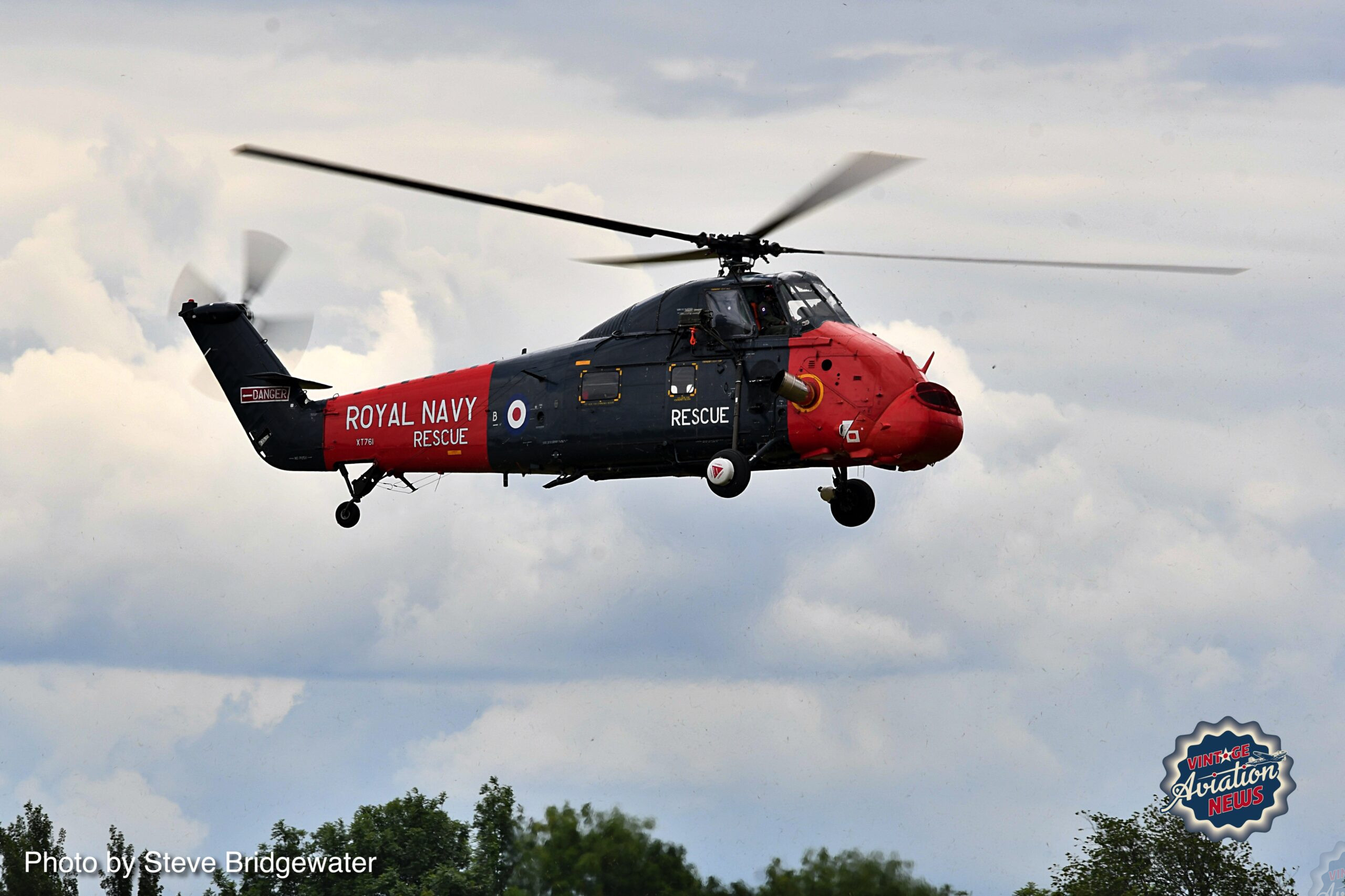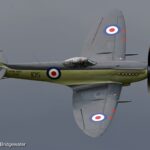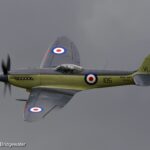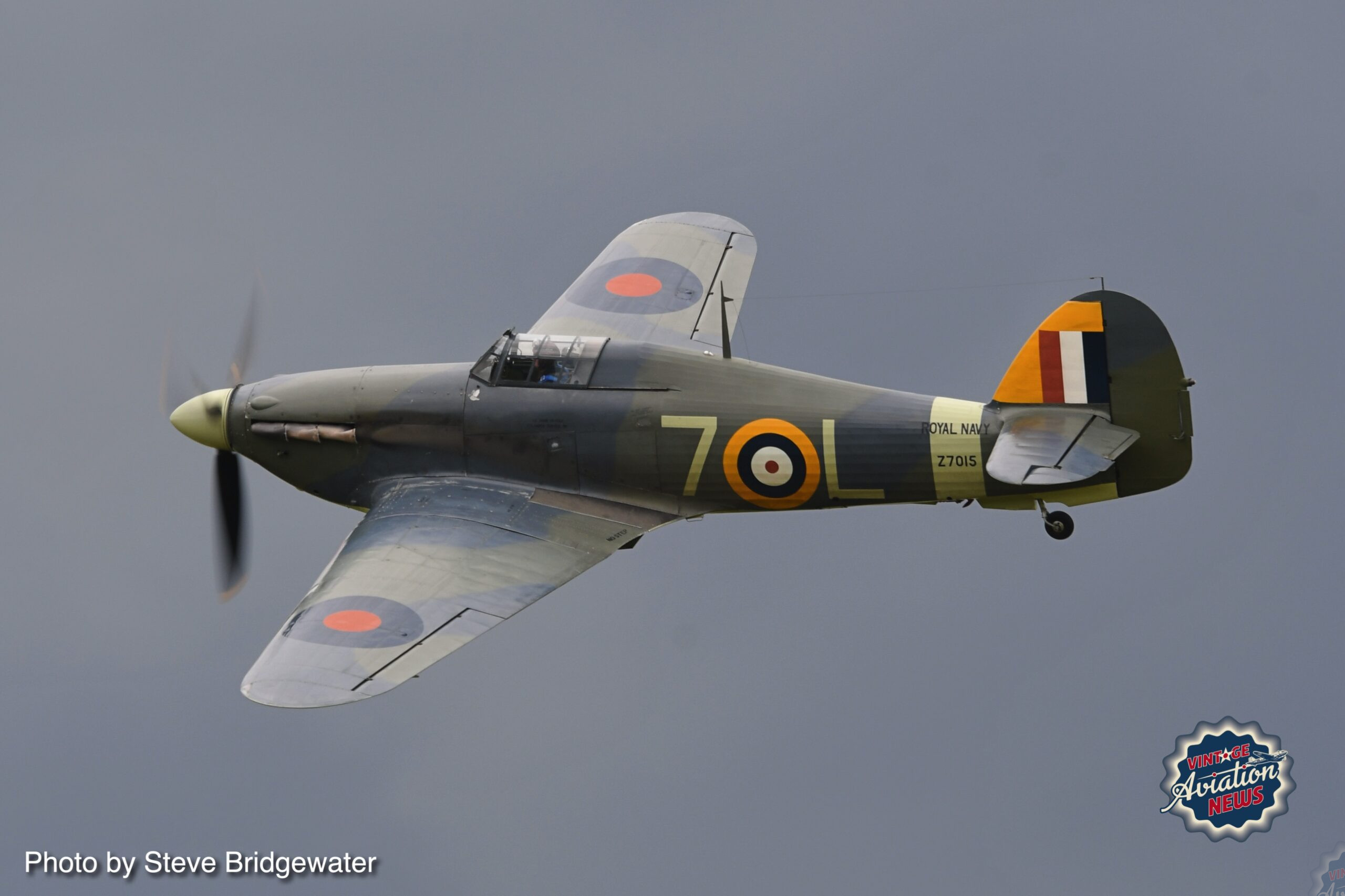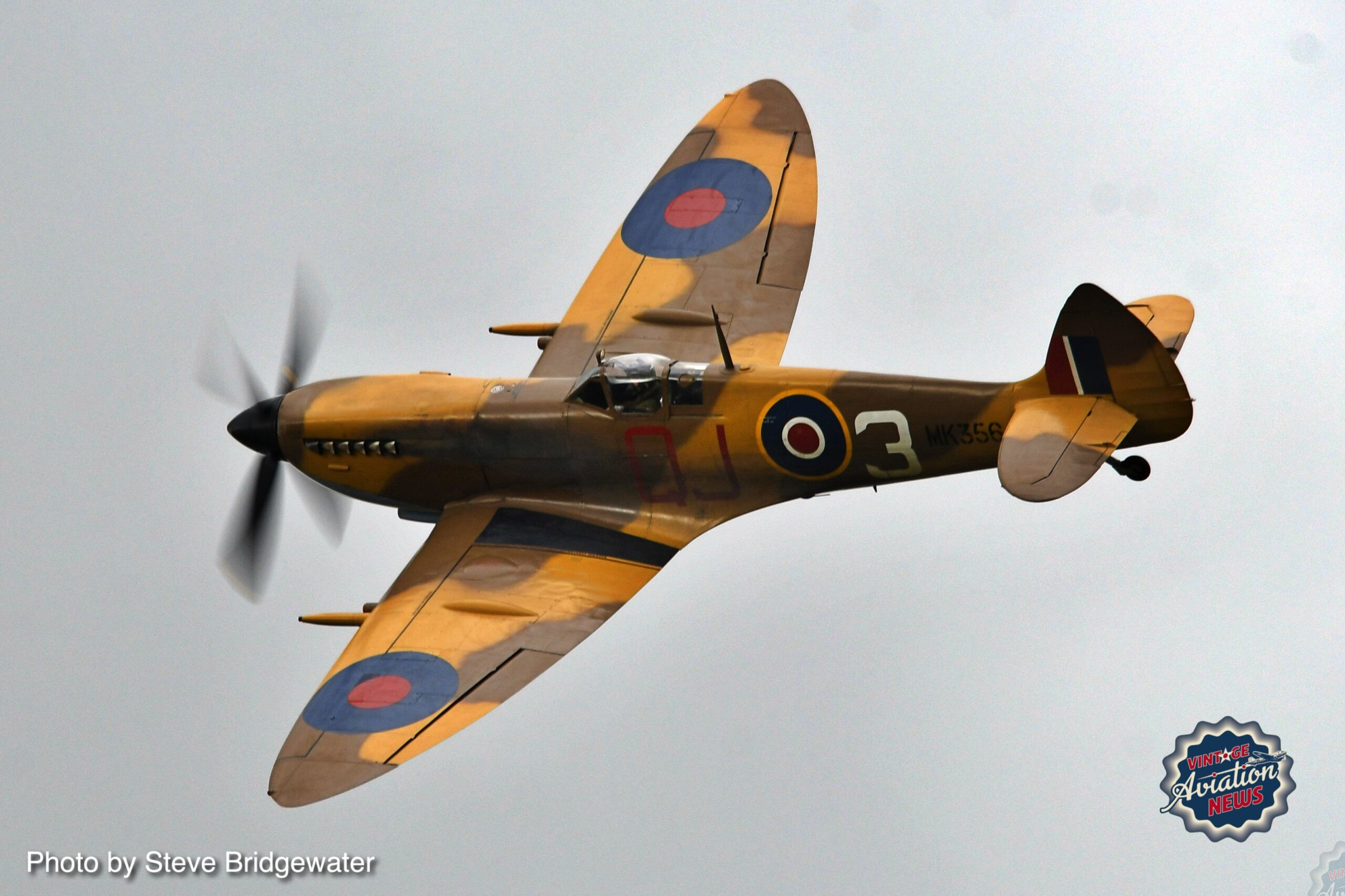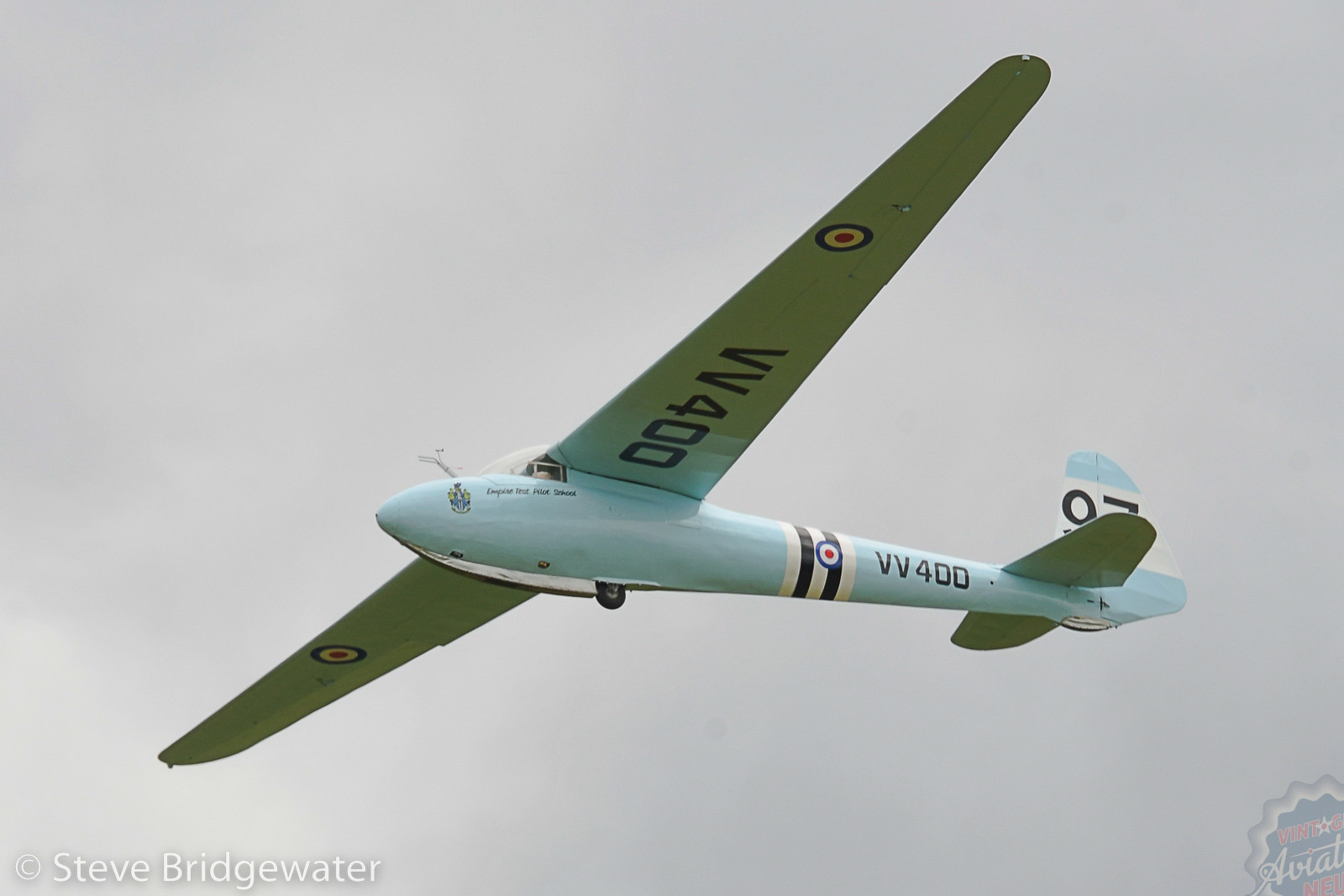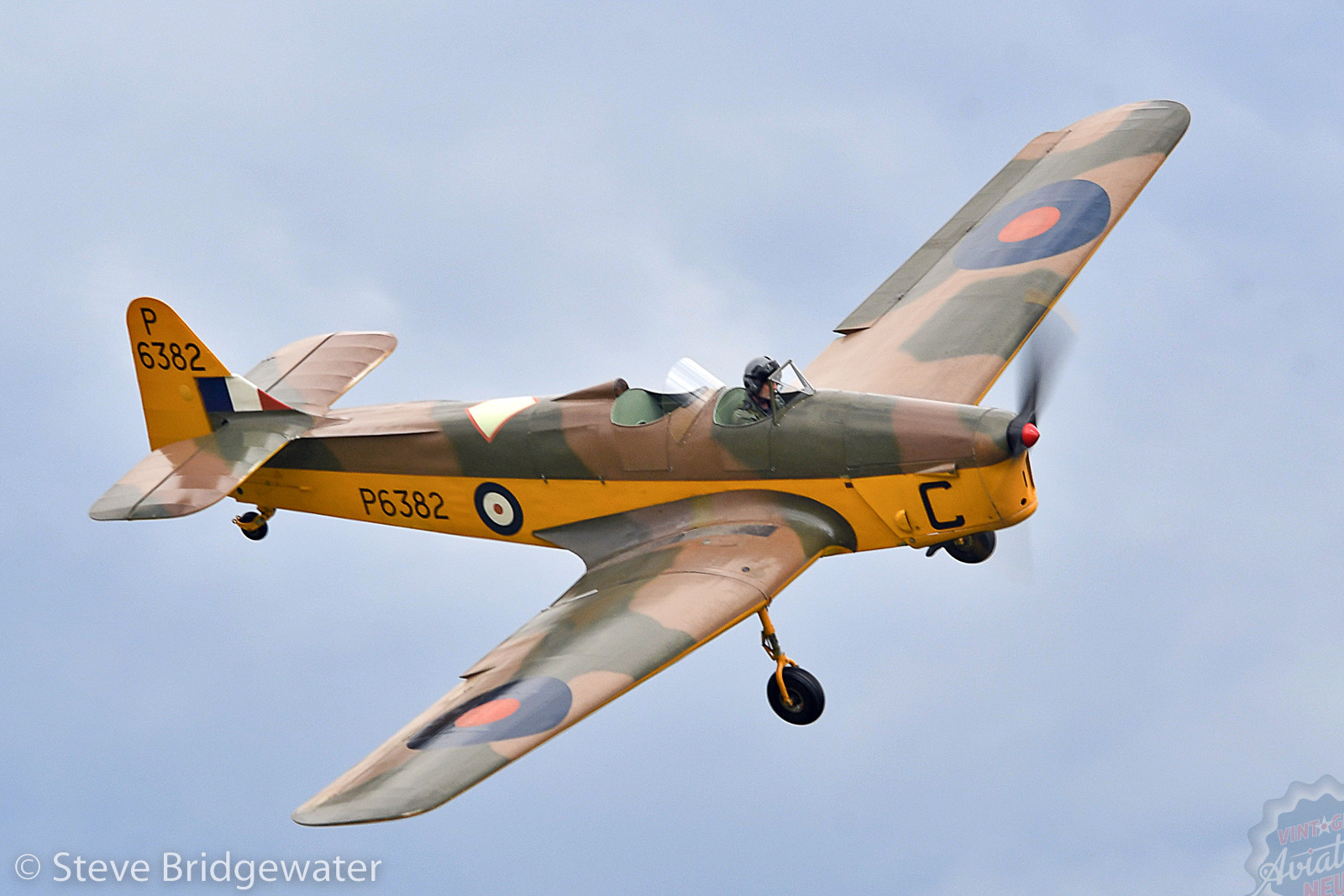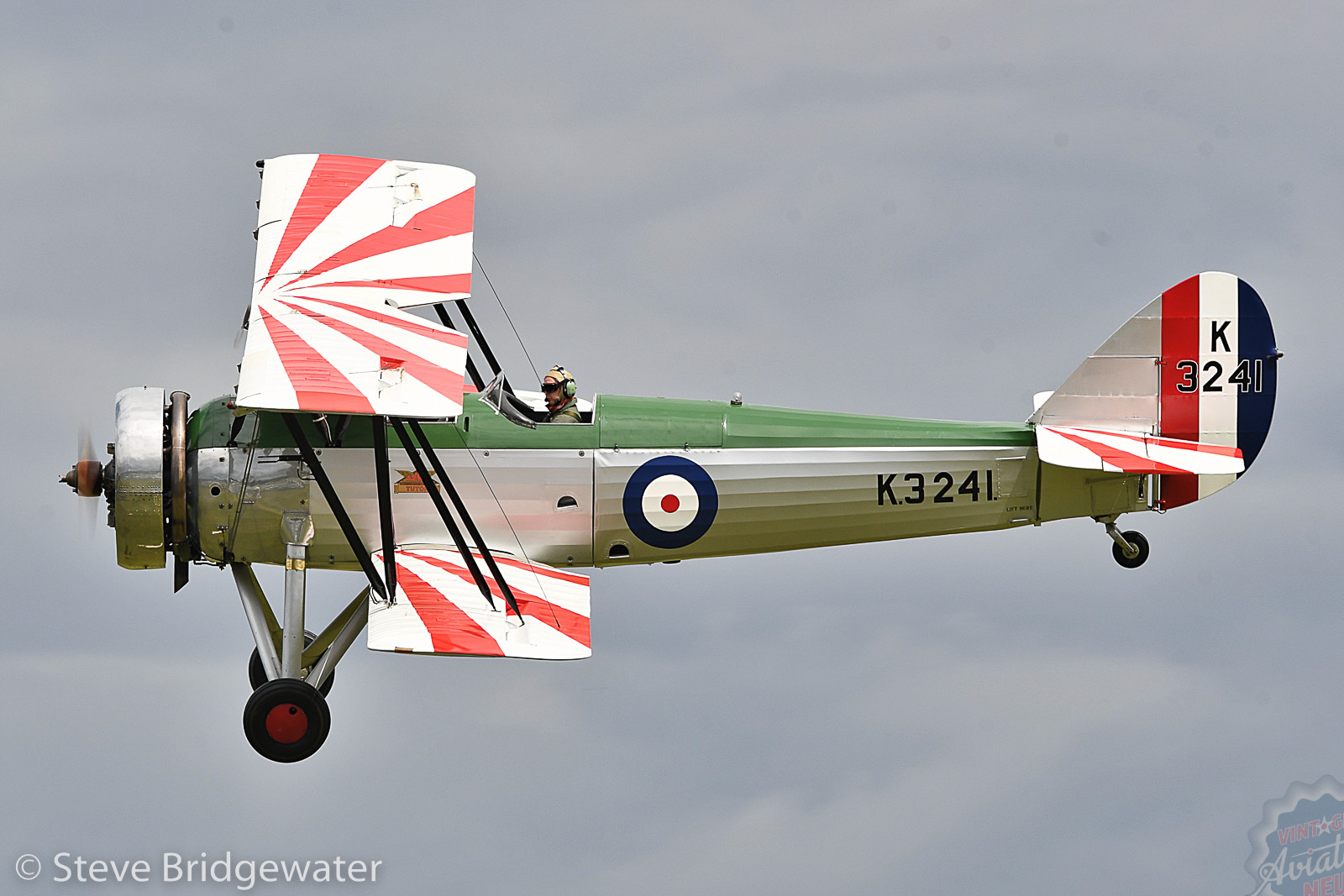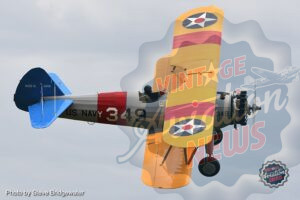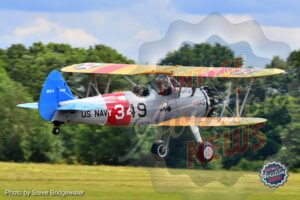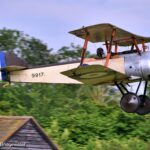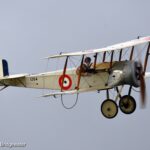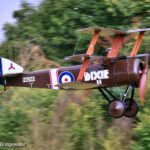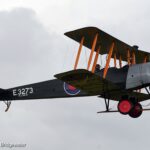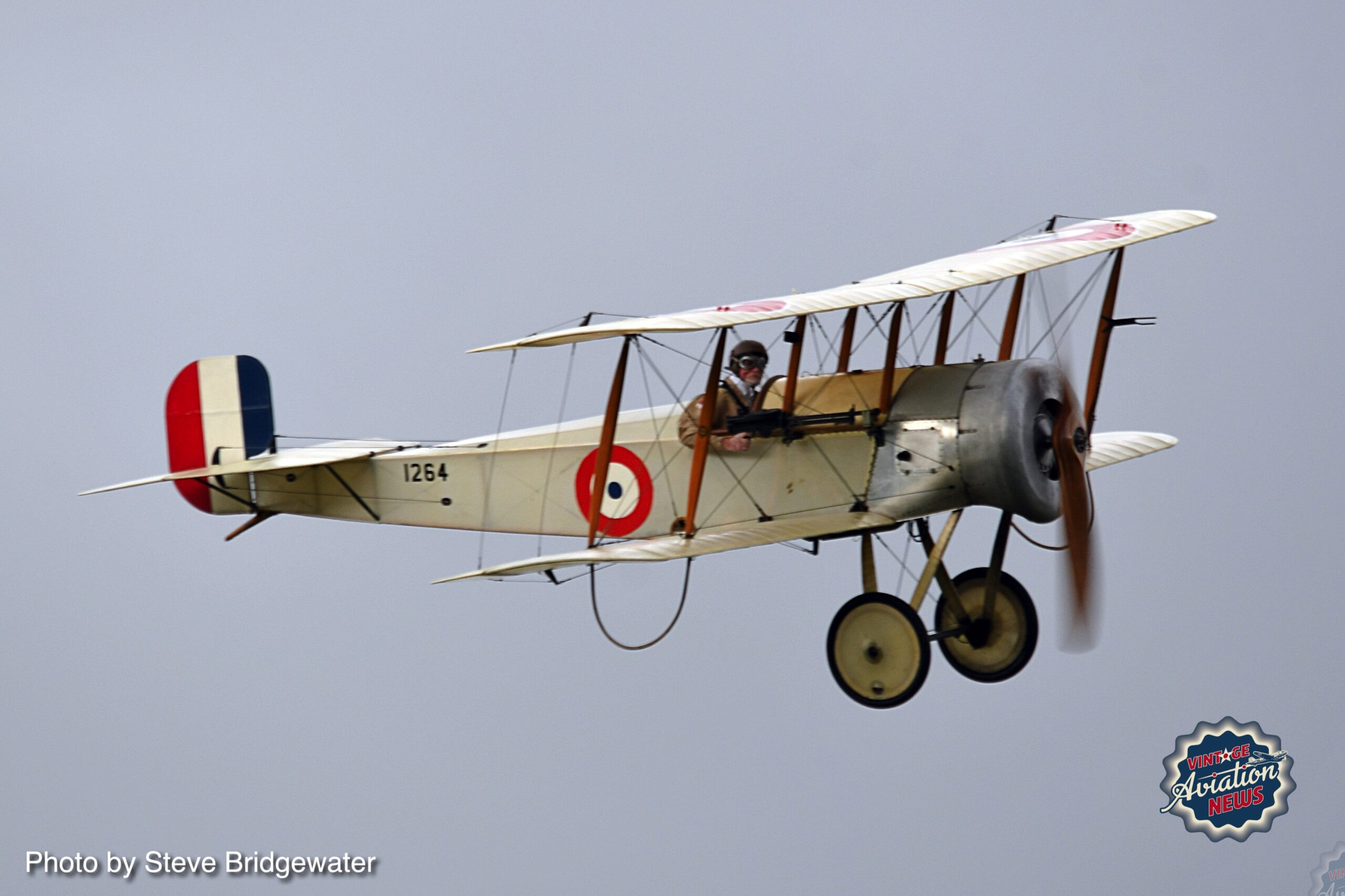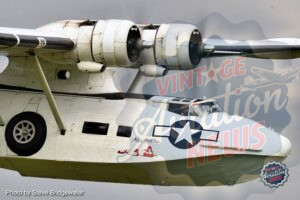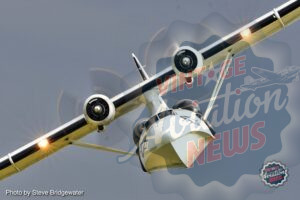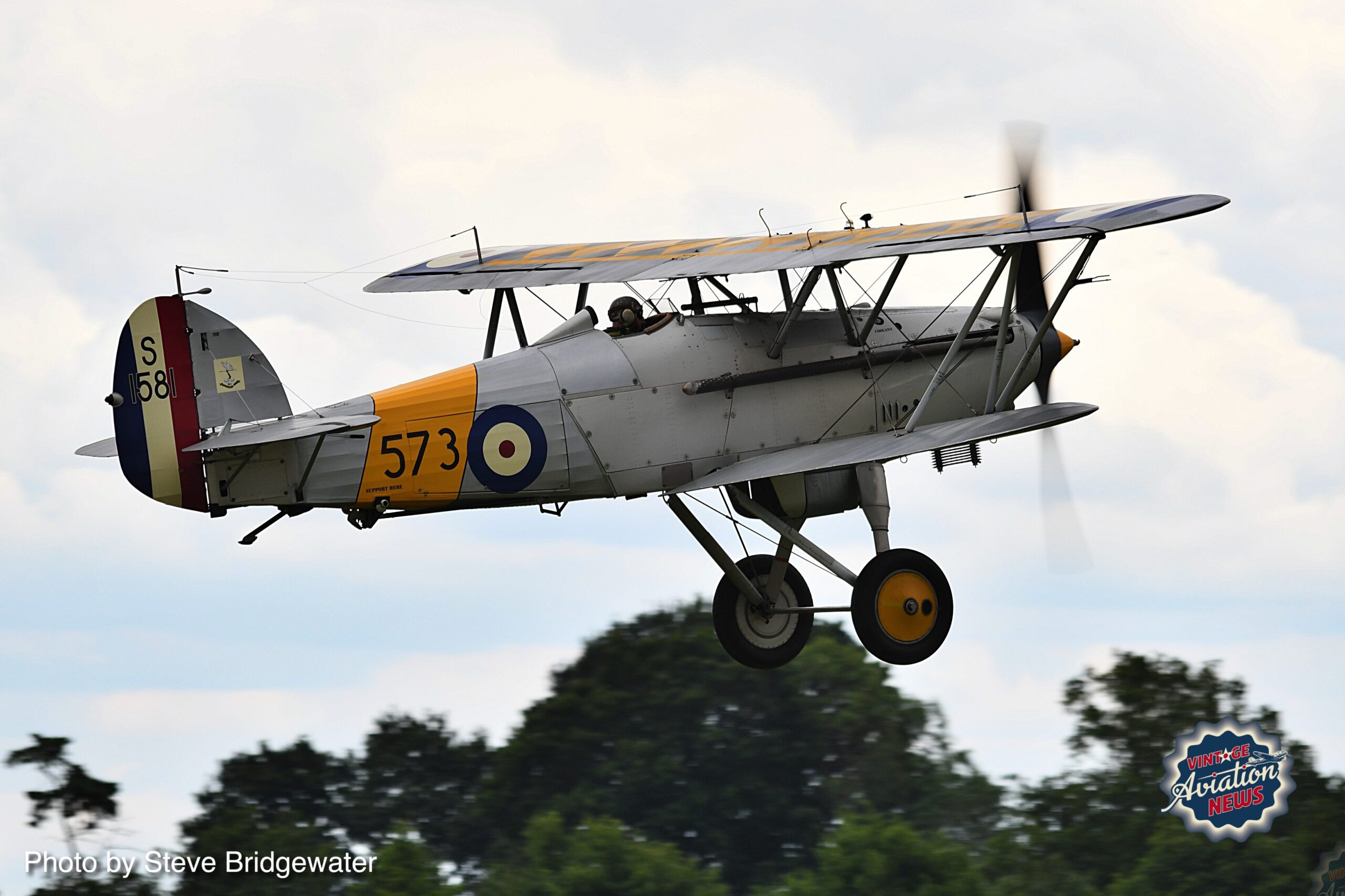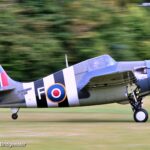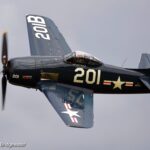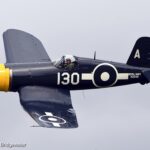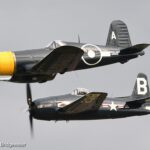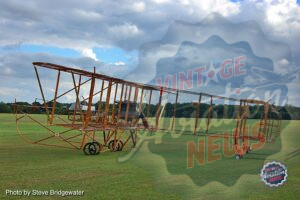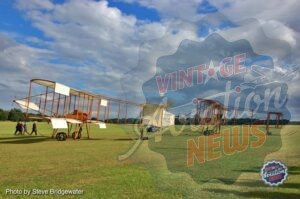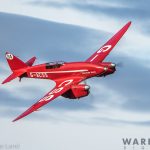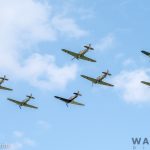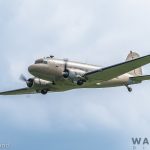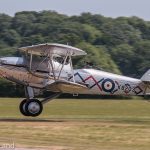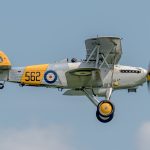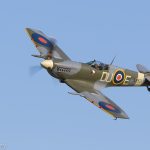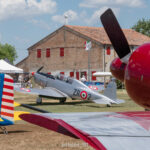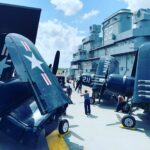by Steve Bridgewater
For those who have never had the privilege of attending an event at the hallowed grass airfield at Old Warden in Bedfordshire, England, please allow me to set the scene…
Although famous within the aviation world as the home of the Shuttleworth Collection, the Old Warden estate is set within 875 acres of parkland. There are stunningly beautiful gardens, a woodland sculpture trail, the 1875-built Jacobean-style manor house, and the delightful Regency and Victorian layered Swiss-Garden. There’s even a pair of peacocks waiting to strut their stuff just for you! If ever there was an English country estate that summed up the green and pleasant idyll of Britain, it is the Old Warden Park.
From Jazz on the lawn to yoga in the gardens, there are so many things to do at Old Warden – but for many of us, the attraction is the unique collection of vintage airplanes and vehicles.
Richard Shuttleworth inherited the family estate in 1932 at the age of 23. A fascination with anything mechanical led him to motor racing and in 1935 he won the British Grand Prix. He was undoubtedly destined for great things on the track but a bad crash in the 1936 South African Grand Prix caused him to retire from racing and take up a much safer hobby… flying! Learning to fly in a de Havilland DH.60 Moth (which still lives at, and flies from Old Warden today), Richard soon began collecting and flying vintage aeroplanes including a 1909 Bleriot XI, a 1910 Deperdussin, and a Sopwith Pup. Tragically, Richard was killed in August 1940, while serving in the RAF; his Fairey Battle crashed during a night flying exercise.
Four years later, his distraught mother Dorothy, established the Richard Ormonde Shuttleworth Remembrance Trust “for the teaching of the science and practice of aviation and of afforestation and agriculture.” His collection of cars and airplanes formed the nucleus of what is today the Shuttleworth Collection.
The all-grass aerodrome and hangars provide a perfect vista for spectators and the ‘dogleg’ flight line and multiple runways mean aircraft routinely provide top side passes aplenty to keep even the pickiest photographer happy. The sloping topography of the site creates a natural amphitheater, and the closeness of the performing aircraft means many people choose to set up picnics in their cars and watch from sun chairs; it really is an idyllic and intimate air show.
Today, 90 years after the Old Warden aerodrome was founded, the collection hosts a number of events each year – but few are as well attended as the Fly Navy air show. Combining some of the highlights of the collection’s fleet with visiting, privately owned warbirds, the event provides an opportunity to see aircraft from the British Royal Navy’s Fleet Air Arm (and its predecessor, the Royal Naval Air Service) fly alongside aircraft from the U.S. Navy.
The cancellation of the Royal Navy’s own air shows at RNAS Yeovilton and RNAS Culdrose meant this was the nearest it had to an ‘At Home Day’ event; members of the ‘Senior Service’ were in attendance en masse as a result. Also fielding a large showing, both in the air and on the ground, were members of the Navy Wings charity and its affiliated units. The Royal Navy’s Fleet Air Arm Historic Flight was officially disbanded in 2019, with its aircraft donated to the civilian-run Navy Wings. The machines have since been transferred to the civilian register, and are now funded through donations.
Navy Day at Shuttleworth was the brainchild of Tim Manna’s Kennet Aviation, this being the fourth “Navy Day” and Fly Navy Air Show over the last several years. It all started in 2006 when Old Warden was the venue for the first public appearance of Kennet Aviation’s Seafire Mk.XVII (SX336) following its initial rebuild. Navy Days followed on. This year’s very successful event was the result of the great cooperation and efforts by Kennet Aviation, The Fighter Collection, Navy Wings, and of course, the Shuttleworth Collection.
Through the generous contribution of other heritage naval aircraft owners who, under the Navy Wings umbrella, display their aircraft at air shows, the charity aims to tell the story of British naval aircraft development and the men and women who have served – and continue to serve – within the Royal Navy’s flying wing.
Following a banner tow demonstration and the traditional parade of vintage vehicles, the show began in earnest at 2:00 pm with one of the first four-ship displays by the Gazelle Squadron. The Westland Gazelle helicopter served in all three arms of Britain’s military, the RAF, British Army, and Royal Navy from its introduction in 1974. The Fleet Air Arm used its machines primarily in the training role, but Army-owned Gazelles also served with 3 Commando Brigade Air Squadron of the Royal Marines and later, the Commando Helicopter Force of the Fleet Air Arm, where they operated as utility and reconnaissance helicopters.
The privately-owned Gazelle Squadron operates an extensive fleet of the type, and its pairs display has been a familiar sight at British air shows for a number of years. However, for 2022, the team has worked up a dynamic and highly polished four-ship routine. Harking back to the Royal Navy’s official Helicopter Display Team – the Sharks – which was operated by No.705 NAS at RNAS Culdrose from 1975 until 1992, this new act was flown by Tim Grey, James Richards, Andrew Wellesley and Kev Mathieson. It was a thrilling addition to the program and sparked nostalgia for many who remember the Sharks with affection.
The UK has seen a resurgence of vintage helicopters in recent years, and nowhere was this more obvious than at Shuttleworth’s Fly Navy event. The Somerset-based Historic Helicopters collection provided its ex-Commando Westland Sea King (G-CMDO) and unique, ex-Navy Westland Wessex (G-WSEX) for the display. Both types owe their ancestry to designs emanating from Sikorsky in the USA, with the Wessex being a UK-built, turbine-powered derivative of the H-34 Choctaw, and the Sea King being a development of the S-61.
The Sea King and Wessex each served in both the RAF and Fleet Air Arm, with the final Wessex bowing out of service in 2003 and the last Sea King retiring in 2018. However, thanks to the efforts of Historic Helicopters, a trio of Sea Kings and the Wessex have joined a Westland Whirlwind (the UK variant of the Sikorsky H-19) and are now all flying at British air shows. Al Sparks and Michael Malric-Smith (in the Wessex and Sea King respectively) flew a brilliant, coordinated display to show off these big helicopters to great effect.
It had also been hoped to fly four Westland Wasp helicopters at Fly Navy, but sadly Terry Martin’s machine became unserviceable on the morning of the show. Nonetheless, the sight of three Wasps in close formation was a highlight for many spectators, and something not seen for many decades. The Wasp was developed in the 1960s as a turbine-powered, shipboard anti-submarine helicopter. Created to be small enough to land on the deck of a frigate while also carrying a useful load of two homing torpedoes, the Wasp was a hugely popular type. It even sank one ship in combat, seriously damaging the ARA Santa Fe submarine on April 25th, 1982 during the Falklands War. Unfortunately, the Wasps’ display slot coincided with the only rain of the day, but John Beattie, Steve Daniels, and Tim La Fosse battled on to deliver a memorable display.
The Navy Wings charity recently made the difficult decision not to return its spectacular de Havilland Sea Vixen (XP924/GCVIX) to the skies. The supersonic, carrier-borne fighter made a gear-up emergency landing in 2017, and despite fundraising efforts, the group has been unable to finance its return to the skies. However, it has pledged to return the Hawker Sea Hawk to airworthy condition, and it is hoped that this 1950s jet will one day appear at a future Fly Navy event.
Likewise, the 2021 loss of the Navy Wings two-seat Hawker Sea Fury (VX281/G-RNHF) and delays getting the single-seat Sea Fury (VR930) onto the civilian register meant that the most potent Navy Wings aircraft on display at Old Warden was Supermarine Seafire Mk.XVII SX336.
The Seafire is the naval version of perhaps the most famous of all British aircraft – the Spitfire. Modified to operate from aircraft carriers during World War Two, the early Seafires were very similar to their land-based brethren, but the Mk.XVII is a very different beast. It has an early Rolls-Royce Griffon engine turning a four-bladed propeller and has reinforced undercarriage as well as both a retractable arrestor hook and folding wings. Seafires went on to achieve prestigious battle honors, including the Malayan Emergency and Korean War. The type served with the Fleet Air Arm well into the 1950s and the arrival of the jet age.
Built for the Navy as SX336, this aircraft’s battered remains were salvaged from a scrapyard in 1973. After passing through various owners, former US Navy P-3 Orion pilot, Tim Manna, acquired the airframe and undertook the arduous and expensive task of restoring her to fly. Earlier this year, Manna sold the magnificent fighter to Navy Wings which, funded by a sizable donation, also allowed the acquisition of a spare Rolls Royce Griffon Mk.VI engine critical to the Seafire’s long-term sustainability. During the Shuttleworth Collection’s Fly Navy event, SX336 was flown by serving Royal Navy pilot Chris ‘Goaty’ Gotke and was displayed in formation with the collection’s resident Supermarine Spitfire and Hawker Sea Hurricane.
The Sea Hurricane on display was built for the Navy in 1940 as Z7015; it is the only surviving example of the breed to fly in naval configuration. The airframe was built in Canada by the Canadian Car and Foundry and shipped to England, where it was fitted with an arrester hook to enable it to land on the small flight deck of modified merchant ships. It flew with No.880 Squadron, but is not thought to have seen combat, finishing its career as a training aircraft before being donated to Loughborough College as an instructional airframe. Acquired by the Shuttleworth Collection in 1961, it remained on static display until 1986 when restoration to flying condition began. It flew again in 1995 and, wearing its wartime 880 Squadron colors, it has been a firm favorite at Old Warden displays ever since.
The collection’s Spitfire Mk.V (AR501) also came via Loughborough College. The airframe is famous for being one of the Spitfires which escorted B-17F Memphis Belle on its sorties from the UK during WWII. It appears at most Shuttleworth Collection events – but today it was not the only Spitfire to feature, as the RAF’s Battle of Britain Memorial Flight provided its Spitfire Mk.IX (MK356) for a trio of topside passes.
Vintage gliders are also a popular addition to Shuttleworth displays, and at the Fly Navy event the Elliotts of Newbury (EoN) Olympia and Primary were both towed aloft by a Piper Super Cub. EoN built the Olympia – or the Olly for short – in 1946 to German plans drawn up for the 1940 Olympics. It was a very capable machine, and the example at the show (VV401) was flown by many Navy pilots during its time at the Empire Test Pilots School. Graham Saw was at the controls during today’s performance.
Meanwhile, the Primary is based upon the German SG 38 Schulgleiter of 1938. It is best described as a ‘minimalist’ aircraft, consisting of a cable-braced wing and tail connected to an open-truss framework. The pilot – in today’s instance Richard Crocket – does not sit ‘in’ the Primary, rather they sit ‘on’ it!
EoN began building the type in the 1940s. In 1948, both the Air Training Corps and the Combined Cadet Force ordered several of the top under the name Eton TX.1. The traditional launching method involves a bungee cord (downhill), but today saw Richard Crocket aero-towed to several thousand feet before gliding back to a well-deserved round of applause.
Upping the tempo just a little from the vintage gliders was a well-choreographed performance delivered by four training aircraft from the Shuttleworth Collection. Each of these aircraft had served with, or been flown by, members of the Fleet Air Arm. Led by chief pilot Paul Stone in the delightful de Havilland DH.82a Tiger Moth, the formation also included a DHC-1 Chipmunk, Miles Magister and Avro Tutor. Developed from the pre-war Miles Hawk Major, the Magister was a low-wing, two-seat trainer which entered service in 1938. At the outbreak of WWII, more than 700 Magisters had entered service, but by the time production ended in 1941, Miles had delivered 1,203 examples in total. Just five Magisters remain airworthy today, and earlier this year all five flew together at Old Warden for the first time. It really was a joy to behold!
The Avro Tutor is typical of many of the aircraft that are flown by the Shuttleworth Collection in that not only is it the sole airworthy example – it is also the sole survivor. The British military received 606 Tutors from 1933 onwards and the Stearman-sized biplane served until 1941. Built primarily of metal and covered in fabric, the Tutor was powered by a 240hp Armstrong Siddeley Lynx engine and was famed for its inverted flying capabilities. The Collection’s example (K3215/G-ASHA) is painted in the markings of the Central Flying School’s aerobatic team but today it represented those airframes flown by the Fleet Air Arm.
Kennet Aviation’s resident, ex-US Navy Boeing N2S Kaydet (N2JS) also took to the skies during the day, taking part in an unusual mixed formation with a pair of T-6 Texans (representing US Navy SNJs and Fleet Air Arm-operated Harvards). One of the Texans was Kennet’s G-KAMY, while the other was Navy Wings’ ‘flying billboard’, G-NWHF.
Another World War Two and post-war trainer to wow the crowds was the Shuttleworth Collection’s recently acquired Avro Anson (G-AHKX). This aircraft was built as a civilian Avro XIX and restored by BAE Systems apprentices between 1984 and 2002. Shuttleworth operated it on behalf of BAE Systems until earlier this year, when the aircraft manufacturer donated it – along with a DH.60 Moth and Blackburn B.2 – to the collection for safekeeping. Today, the Anson wears the markings of a military Anson (TX176). Chief engineer Willy Hacket and Richard Crocket took her aloft, with the latter gentleman no doubt feeling much warmer in the Anson than when he was flying the Primary glider!
Of course, the Collection is famous for its early airplanes, and visitors to Fly Navy were treated to appearances by the original Sopwith Pup and Avro 504K, as well as the authentic Sopwith Triplane recreation (although sadly the original Bristol F2B Fighter suffered a mag drop and was unable to display).
All three of these aircraft types served with distinction within the Royal Naval Air Service (as well as the Royal Flying Corps) during the Great War. In August 1917, a Sopwith Pup flown by Sqn Cdr Edwin Harris Dunning became the first aircraft to land aboard a moving ship. Dunning performed three landings aboard HMS Furious, but sadly he was drowned following his third landing trial when the Pup fell over the ship’s side into the sea.
The Collection’s Pup (G-EBKY) was the last of ten examples converted to a two-seat Dove configuration in 1918, being sold to Mr. C.H. Low-Wylde and based at West Malling in Kent. In April 1934, Richard Shuttleworth discovered G-EBKY being flown from a field near Kempston, west of Bedford. As it lacked a legal certificate of airworthiness, the owner, Geoff Chamberlain, was not interested in selling the airplane, but he and Richard eventually agreed on a deal to swap an airworthy Avro 504 for the Dove.
By being what the collection now refers to as “economical with the truth” Richard managed to sort out the paperwork issue and, in his Old Warden workshop, he set about returning the airframe to its original single-seat Pup standard. Richard frequently flew the Pup, which he finished in RFC markings complete with a spurious serial number, N5180, thus becoming what is believed to be the first aircraft restored to military markings for a private owner – i.e. the world’s first ‘warbird’! In 2005, the aircraft was extensively refurbished in the colors of 9917, a Beardmore-built aircraft which was fitted with Le Prieur rockets when it served aboard HMS Manxman with the Royal Naval Air Service.
The Collection’s Avro 504K G-ADEV was built in 1918 as H5199, but currently flies in the markings of E3273, an RFC night fighter. Although H5199 was delivered too late for service in the Great War, she served as a glider tug during World War Two.
Although the Sopwith Triplane is technically a reproduction, built by the Northern Aeroplane Workshops to the original drawings, it was seen by Sir Thomas Sopwith in 1989 and he declared it to be a “late production” machine. Therefore, the aircraft sports an official Sopwith serial number plate on the engine cowl in recognition of this fact.
Another “too-good-to-be-classed-a-replica” aircraft is the Bristol Scout (G-FDHB) created by the Rebuilding Grandad’s Aircraft group. This authentic recreation of Scout 1264 was built by David Bremner, Theo Willford and Rick Bremner and incorporates parts of the original aircraft flown by Bremner’s grandfather, Flight Sub Lieutenant FDH ‘Bunny’ Bremner. Bunny flew 1264 with the Royal Naval Air Service in the Eastern Mediterranean at the beginning of the Great War.
David Bremner flew the Scout with great aplomb during the Fly Navy display, but also enthralled the audience with a detailed ‘Pilot Chat’ in front of the aircraft during the morning. This is the sort of up-close and personal access which the Shuttleworth Collection is famed for.
By far the largest aircraft to grace the Fly Navy program was Duxford-based Plane Sailing Ltd’s Consolidated PBY-5A Catalina G-PBYA. Actually, a Canadian Vickers-built Canso, the aircraft flies in the markings of a USAAF OA-10 search and rescue variant and was displayed in an energetic fashion by Derick Head and Richie Piper.
Moving to the interwar period, the Collection’s beautiful Westland Lysander was put through its paces by ‘Dodge’ Bailey. It had been hoped that Shuttleworth’s Gloster Gladiator would fly a pairs routine with the gorgeous Hawker Nimrod belonging to Duxford-based The Fighter Collection (TFC). Sadly the Gladiator became unserviceable following a morning test flight, but this did allow Stu Goldspink to show the capabilities of the Nimrod to best effect in a spirited solo display. Nimrods first joined the Fleet Air Arm in 1932 as replacements for the aging Fairey Flycatcher. Designed by Sydney Camm, the Nimrod was superficially similar to the Fury fighter operated by the RAF, but with a number of modifications to optimize it for carrier operation.
TFC’s Nimrod I (S1581/G-BWWK) was the third production aircraft built by the Hawker Engineering Company at their Kingston-upon-Thames facility and allocated to 408 Fighter Flight as ‘573’ embarked aboard HMS Glorious. The Flight became No.803 NAS in April 1933, and S1581 remained with the unit aboard Glorious until she was written off in early 1938. Her subsequent history is unclear, but the remains were recovered from a scrapyard in West London during the early 1970s and donated to the RAF Museum. Eventually her components passed to Aero Vintage in 1994, with the aircraft flying again in July 2000; it joined TFC four years later.
TFC also provided a trio of World War Two naval fighters, with all four of these aircraft making rare appearances away from their Duxford base. The Grumman FM-2 Wildcat (G-RUMW) and Goodyear FG-1D Corsair (G-FGID) both wear Royal Navy markings and, in the hands of Stu Goldspink and Brian Smith respectively, were able to land on Old Warden’s turf. Meanwhile, Pete Kynsey opted to fly TFC’s Grumman F8F-2 Bearcat (G-RUMN) directly from Duxford to meet his colleagues overhead the airfield.
Unfortunately, the Wildcat suffered a problem with its canopy after take-off and Goldspink wisely opted to depart directly to Duxford, but the Corsair and Bearcat proceeded to show what a powerful naval fighter can do. In the skilled hands of Kynsey and Smith, the aircraft flew fully-aerobatic routines, combined with stylish top-side passes using the Old Warden ‘bend’ to great effect.
Finally, to close the main portion of the show, the Seafire, Spitfire V, and Sea Hurricane got airborne again to perform a series of flypasts with the Bearcat and Corsair in the late afternoon sunshine.
Regular visitors to Old Warden know not to rush off as soon as the last act has concluded – and today was no exception. Following a short interlude to allow visiting aircraft to depart for home, Jean-Michel Munn took to the skies in the incredible Avro Triplane replica.
The original Triplane was built by A.V.Roe in 1910 and was powered by a 35hp Green water-cooled, four-cylinder, inline engine. It was used as a trainer at the Avro Flying School at Brooklands, but crashed after just a year and was scrapped. This full-scale, flying replica was built for the 1965 film Those Magnificent Men in Their Flying Machines and was afterward donated to the Shuttleworth Collection.
The Triplane is only flown when conditions are perfect, but the Bristol Boxkite replica – also built for the ‘Mag Men’ film – is even more susceptible to adverse wind conditions. Sadly, although it had been dragged out of the hangar, the wind picked up sufficiently to ground it – but this had one major advantage…
As the crowds started to leave the aerodrome, the stragglers were treated to a beautifully unique sight as the Boxkite was positioned in the evening light alongside the latest project to emerge from the hangars at Old Warden.
Unbeknownst to all but a few, an authentic reproduction of a 1913 Maurice Farman MF.7 Longhorn has been taking shape within the Flying Restorations Ltd hangar on the far side of the aerodrome and its owner, Tom Harris, chose to unveil this incredible French Great War aircraft during the Fly Navy event.
Substantially complete, and with an original Rolls-Royce Hawk engine in place, the aircraft is now ready for covering and members of the crew indicated that they were hopeful for a maiden flight in 2023.
The same team is working on an Airco DH.2 for the same owner, and enthusiasts can look forward to the day when these rare aircraft join the unbeatable cadre of Great War veterans taking to the air from the hallowed Old Warden turf.
Only at Shuttleworth!
Many, many thanks to Steve Bridgewater for this delightful, and extensive report on the Fly Navy display at Old Warden. We hope our readers have enjoyed his magnificent images and detailed descriptions!







